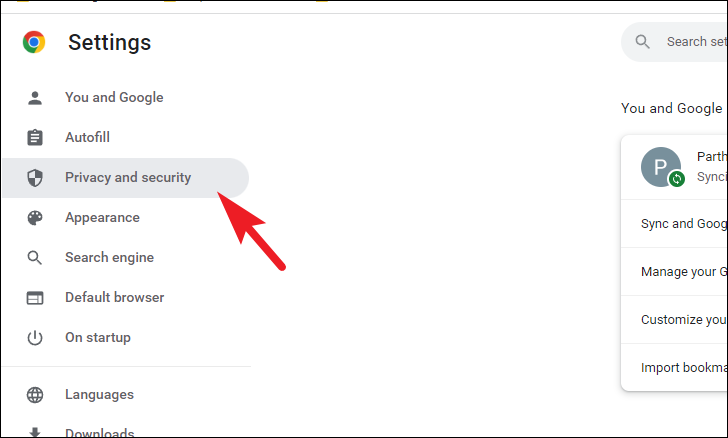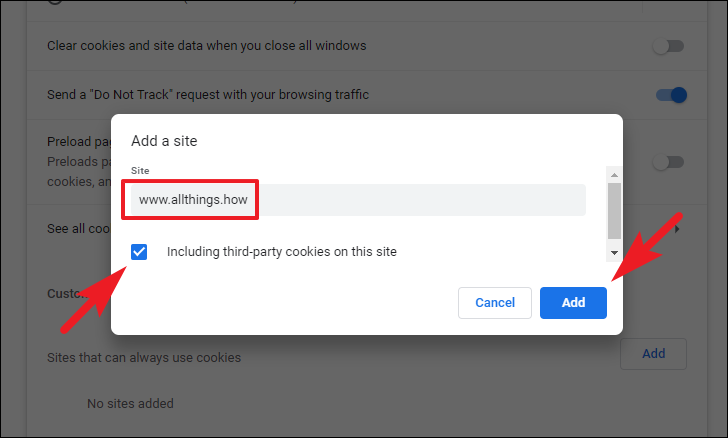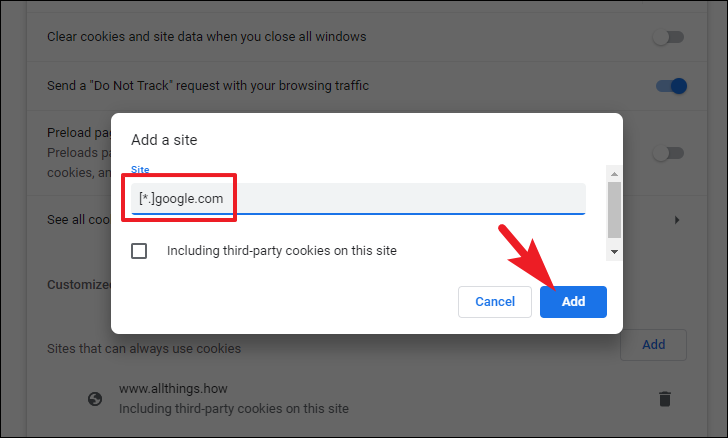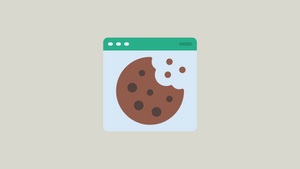Browser cookies will always be a little controversial. On one hand, they enable internet activity tracking, but on the other hand, they are also necessary for some websites to work correctly. They can keep you signed in to websites, remember your preferences, and curate locally relevant content.
So, what do you do – block them or allow them? Well, you don’t have to stick to a certain choice. If you don’t like cookies, you can still block them elsewhere while allowing them on certain websites you use often.
Thus, if you are facing any functionality issues on a specific website, you can whitelist the complete website or even a sub-domain to ensure it works properly without having to trade off privacy.
Note: Chromebook users who are using their device for school might not be able to change this setting without administrator approval.
Whitelist a Website from Chrome Settings
You can easily whitelist a website or sub-domain from the settings of your Chrome browser on your computer.
Open the Chrome browser on your computer. Then, from the Chrome home page, click on the ‘kebab’ menu (three vertical dots) in the upper-right corner. From the menu that appears, click on the ‘Settings’ option to continue.

Next, click on the ‘Privacy & Security’ tab from the left section to proceed.

Then, from the right section, click on the ‘Cookies and other site data’ option to continue.

Now, click on the ‘Add’ button following the ‘Sites that can always use cookies’ field. This will bring an overlay window.

After that, enter the website address that you wish to whitelist.
Note: There are two types of cookies: First-party and Third-party. First-party cookies include cookies from the site you’re visiting whereas third-party cookies are created by other sites. These sites generally own some content on the webpage you’re on, like ads or images.
Click on the checkbox preceding the ‘Including third-party cookies on this site’ option if you wish to include third-party cookies as well. Otherwise, leave it unchecked. Then, click on the ‘Add’ button to whitelist the website.

You can also whitelist all the subdomains of a particular website by adding an asterisk “*” suffix in the web address (as shown in the screenshot below). E.g., [*.]google.com will cover “calendar.google.com” as well as “drive.google.com” addresses.

You can also add a web address that doesn’t start with http:// or an IP address to whitelist a website.
Now, once you have added the website to the whitelist, it will use cookies even if your global setting is to block them.
Whitelisting a website and its subdomain can help you load it correctly if you have been facing an issue with it. It ensures you can block cookies elsewhere so you don’t compromise your privacy but still use them on certain websites.






Member discussion